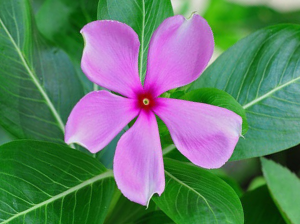When it comes to potential sources of new treatments, tropical rainforests are a veritable gold mine. The numbers and statistics regarding the diversity of botanical life found in these environments is truly staggering. Though the tropical rainforests cover an area of around 6 per cent of the earth’s surface, only about 1 per cent of the botanical resources that they contain have been studied by scientists to determine if they possess medicinal benefits.
With over 2 per cent of the tropical rainforest cover being felled every year, more and more species of plants and animals are forced into extinction. In fact, some scientists believe that over one hundred and thirty species become extinct each day. Rainforests are thought to contain over half of all species found on earth. If deforestation continues at is present rate, 25 per cent of the world’s rainforests will have disappeared within the next ten years.
Amongst the species that will be destroyed by deforestation, could be thousands of undiscovered plants that possess medicinal qualities. Plants that could alleviate or even cure diseases that modern medicine is not currently able to treat effectively. Needless to say that deforestation is a serious problem, and the potential threat it poses to the world of medical science is enormous.
 It can take up to fifteen years for a new treatment to undergo medical research and achieve the certification it needs before it can legally be made available to those who will benefit. Yet at the current rate of deforestation, within the same timeframe we will loose over 37% of the worlds remaining rainforests.
It can take up to fifteen years for a new treatment to undergo medical research and achieve the certification it needs before it can legally be made available to those who will benefit. Yet at the current rate of deforestation, within the same timeframe we will loose over 37% of the worlds remaining rainforests.
Twenty five percent of the drugs used by western medicine are derived from plants found in tropical rainforests, including the Cinchona Tree, Curare Lianas, and Rosy Periwinkle. These plants have been used to create potent medicines for the treatment of malaria (quinine), multiple sclerosis (alkaloid d-turbocuarine), and cancer (rosy periwinkle).
The treatments discovered to date represent only a small percentage of the medicinal treasures that the rainforests have to offer. If 25% of our current medicines have been discovered by studying just 1% of all botanical life found in the rainforests, then imagine what the remaining 99% may hold!
 Rosy periwinkle was traditionally used by Madagascan healers as a treatment for diabetes. Today it is used to produce compounds found in two highly effective life saving treatments. Vincristine is a particularly effective drug that is used for the treatment of lymphatic Leukemia. It’s discovery led to a staggering increase in survival rates, from around just ten percent to over eighty percent.
Rosy periwinkle was traditionally used by Madagascan healers as a treatment for diabetes. Today it is used to produce compounds found in two highly effective life saving treatments. Vincristine is a particularly effective drug that is used for the treatment of lymphatic Leukemia. It’s discovery led to a staggering increase in survival rates, from around just ten percent to over eighty percent.
The second treatment derived from compounds found in Rosy Periwinkle is Vinblastine, it is used in combination with other drugs to treat Hodgkin’s disease. The loss that medical science would suffer from the eradication of rosy periwinkle is understandably inconceivable , but the reality is that we may have already lost even more miraculous plants to deforestation. Deforestation and the potential threat it poses to medical science can never even be properly conceptualised. Even worse, the majority of the earth’s population remain unaware that such consequences even exist.
Thankfully more and more people who live and around the rainforests are turning away from destructive agricultural industries and forestry, embracing new and renewable alternatives instead. People are beginning to work with the rainforest instead of against it, gathering plants for the pharmaceutical industry or other saleable resources. The effect of this change is not only positive on for the future of our rainforests, but also for the people who work in them.
Deforestation yields a profit of just four hundred dollars per acre, whilst gathering resources can yield six times as much per acre. If properly managed, resource gathering can also continue indefinitely. Renewable resource gathering seems to be growing at a healthy rate, largely down to the fact that it provides a way for indigenous people to increase their income and protect their home at the same time.
Nick Davison is passionate about rainforest conservation, he writes for a number of green living and medical science websites, including Covance CRU Leeds.
Image via
